Dyspraxia
Developmental Co-ordination Disorder:
Developmental Co-ordination Disorder (DCD), also known as Dyspraxia, affects a child's physical coordination. Co-ordination is the ability to use various parts of your body smoothly and efficiently. A child who is suffering from DCD may appear to have trouble performing certain activities that would be considered typical by a certain age. When watching them, they may come off as being clumsy. If you believe your child may be suffering from DCD and would like them to be properly diagnosed by an occupational therapist, visit Therapy Services of Greater New York. When left untreated, DCD can worsen as your child gets older.
Symptoms:
Early on, every child develops at a different rate. This is one of the key factors to keep in mind before you rush to a doctor. If you believe your child may have dyspraxia, here are a few of the general symptoms:
Having poor balance/posture.
Often fatigued.
Clumsiness.
Their speech differs.
They have problems with perception.
They have poor hand-eye coordination.
Identifying Dyspraxia at Different Ages:
While we have already discussed the typical symptoms of Dyspraxia, it is important to keep in mind that not everyone displays the same symptoms. Let’s break down some of the identifiable signs of DCD at different stages of life.
An Infant or toddler will have trouble with the following:
Sitting/Standing.
Crawling.
Walking.
Speaking.
Building vocabulary.
Being potty trained.
At early childhood, the following may become difficult:
Trouble tieing shoes, using silverware, zipping or buttoning their jackets, or even writing.
Inability to dress themselves.
Trouble processing their thoughts or even concentrating.
Having trouble going up and down the stairs.
Difficulty learning new skills.
Tend to bump into or drop things.
In later childhood you may notice:
No improvement in the above struggles.
They avoid sports.
Difficulty learning in a classroom setting.
Has trouble with math or english.
Inability to follow instructions or remember them.
Unorganized.
Treatment:
Unfortunately, there is no cure for dyspraxia, but anyone who has this disorder can make improvements with the right help. The earlier you seek out treatment for your child, the better off they will be in the future. It is extremely common to seek treatment from any of the following medical professionals:
Occupational Therapist.
Speech and Language Therapy.
Perceptual Motor Training.
Active Play.
At Therapy Services of Greater New York, we provide occupational therapy (OT) and a full sensory integrated gym for our patients. When your child meets with one of our therapists, we will start by evaluating how they respond to everyday tasks. From there we will come up with a plan to work with them on developing skills needed for their daily lives, whether that be at home or school.
If you are considering bringing your child by for an examination, visit our website to learn more about what we do and how we can help!
